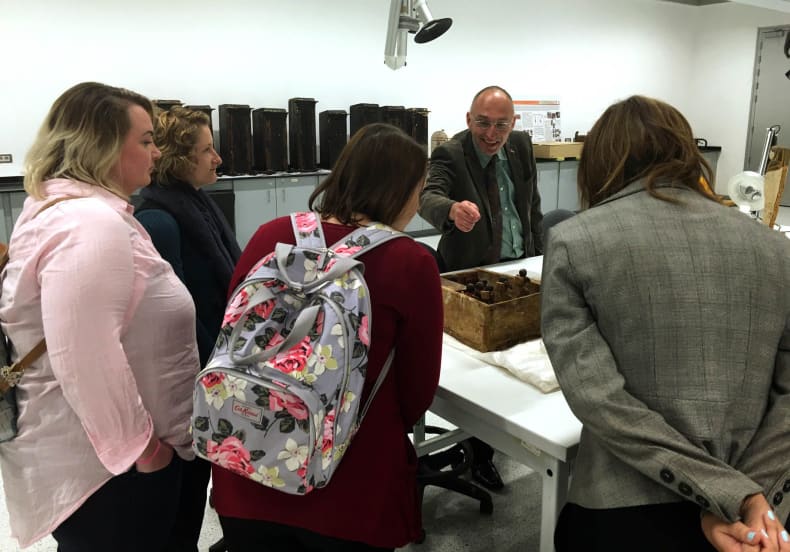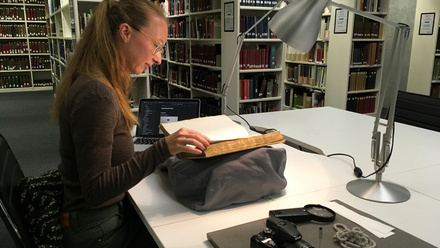Egyptology in Egypt
The Society’s first ‘familiarisation’ tour of Egypt for students of Egyptology has been underway for almost two weeks and will conclude shortly. The tour was designed as an introduction to professional Egyptology for UK-based postgraduate students and three, fully-funded places were awarded following an open competition to Laura Dewsbury (University of Birmingham), Brandi Hill (Swansea) and Ellie Jones (Oxford) in October 2015. The tour has provided them with the opportunity both to visit Egypt but, more importantly, to acquaint themselves with the key people and institutions in the subject through a programme of visits to a variety of archaeological sites, museums and universities.

Dr Penny Wilson leads the students on a tour of the archaeological site of Tell Mutubis
The Society’s Director, Dr Chris Naunton, joined the tour for five days during which time the students visited the Giza Plateau, Dahshur, the Grand Egyptian Museum, Medieval Cairo, Kom Es-Shuqafa and Kom El-Dikka (Alexandria), Bibliotheca Alexandrina, Tell Mutubis, Faiyum University, Medinet Madi, Hawara and Lahun. In all cases the students were accompanied by Egyptian officials working at the sites, as well as the Society’s Fieldwork and Engagement Manager for Egypt, Essam Nagy.

Dr Tarek Tawfik, Director of the Grand Egyptian Museum, shows the students the conservation facilities at the site
The tour is part of a wider programme of activities initiated by Society in recent years with the intention of encouraging productive working relationships and collaborations between archaeologists and Egyptologists based in the UK and in Egypt, both now and in the future.

In front of the Bent Pyramid, Dahshur, with 2014 EES Scholar and Director of Antiquities for Dahshur and Lisht, Mohamed Youssef Ali
The Society's work in Egypt, in helping to uncover and document archaeological sites, remains at the heart of its mission, and it is clear that effective partnerships with our colleagues in the Ministry of Antiquities and other Egyptian institutions will be essential if we are to carry out our work most effectively. The exchanges we have facilitated between students, specialists and others in the UK and Egypt - by inviting Egyptian colleagues to present their research at events in the UK, through our scholarships, by increasing the number of visits made by staff based in London to Cairo and vice versa, and now through the familiarisation tour - are intended to help create the networks from which such partnership will grow. It has been an enormously instructive and rewarding process so far and we expect it will bring about very positive results in the future.
Thanks are due to the Society’s inaugural Cairo Fellow, Melanie Pitkin, for her work in formulating the itinerary for the tour, and to our Fieldwork and Engagement Manager for Egypt, Essam Nagy, who completed preparations after Melanie's time in Cairo had come to an end, and has escorted the students throughout the trip ensuring that they have been getting the best and most Egyptian experience possible!


